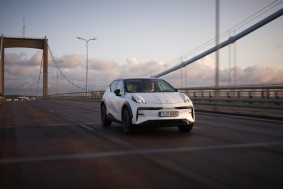The Piton de la Fournaise, one of the most active volcanoes in the world, has erupted for the second time this year, in the southeast of Reunion Island. After a fireworks show that lasted almost twelve days in February, the Piton de la Fournaise comes again to light the fire! For volcanologists or budding explorers in search of unusual, this is the opportunity to engage in a very hot meeting.
The southern sky of Reunion Island has already been adorned with glowing clouds with the onset of the lava jets. The Piton de la Fournaise, which peaks at 2,631 meters altitude, again offers his show of greatness, unique in nature in the Indian Ocean. With its natural enclosure, this type of volcano presents no danger to people or for visitors.
For safety reasons, all trails that provide access to the upper part of the enclosure were closed by state services, but for now, you can still watch the lava flows from the coastline at the Grand Brûlé. Also, Piton Bert, known as Piton Wood Green for connoisseurs, may be viewed from a helicopter during a flight over the crater.
The Piton de la Fournaise: From the Earth to the Moon
Located in the area classified as a World Heritage site by UNESCO, the Piton de la Fournaise forms, with his elder Piton des Neiges, the volcanic mountains of Reunion Island. To view this effusive volcano, visitors will cross the remarkable lunar landscape of the Plaine des Sables. Here, they will have the experience of what it felt like to be the first man to set foot on the moon!
Journey to the Center of the Earth
Feel like pushing the experience even further? The City Volcano located at the Plain of Kaffirs, takes visitors to meeting the volcano through an innovative and interactive museum and a fun and educational trail.
For total immersion in the bowels of the Piton de la Fournaise, do not miss the lava tunnels. Specialists will take visitors about fifty kilometers underground around Saint-Philippe and Sainte-Rose that leads to the ancient lava flows of 2004 or 2007. This exceptional chartered activity can accommodate small and large groups in the best of conditions. With a helmet and a headlamp, visitors will experience a fun lesson in natural science through impressive galleries that can reach more than a kilometer long.

 The Phoenix Newspaper UK | Latest news in UK | Positive news | Inspiring The Next Generation
Inspiring The Next Generation
The Phoenix Newspaper UK | Latest news in UK | Positive news | Inspiring The Next Generation
Inspiring The Next Generation Related Items
Latest News
- Multi-‘Slam champion mom, Osaka, more 'open-minded’ and read...
- Miss Kitty voted Jamaican Media Personality of the Year for ...
- Jamaica-born senior equity and leadership practitioner appoi...
- ZEEKR appoints Qover as its insurance partner in the Netherl...
- Legacy Recordings releases Long Story Short: Willie Nelson 9...
- New housing panel empowering residents meets for first time...
- The countdown to better access to flex beins...
- 7 out of 10 employees are unaware of new day one right to as...
- Council says thanks to city's long-serving foster parents...
- Spectacular firework displays around the world bring in the ...
- It’s destination Seoul for the 2024 Homeless World Cup...
- Does the club versus country dilemma still exist for Afcon 2...
- Recalling the year India reached the Moon - and aimed for th...
- SickKids-Caribbean chosen for NCB’s Grant a Wish...
- The History of ‘Curry’ in the UK...














